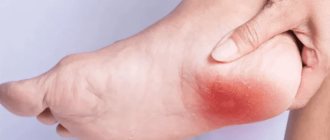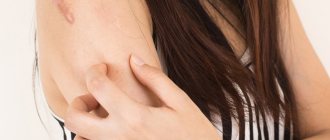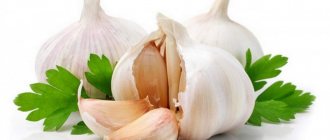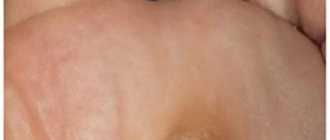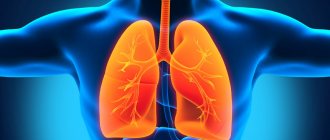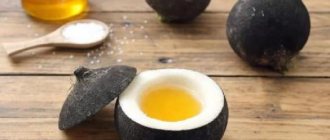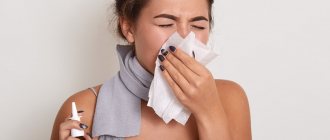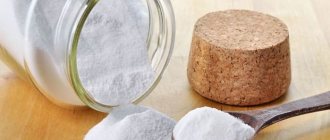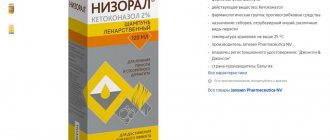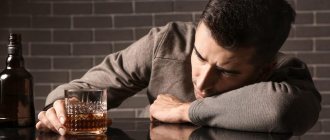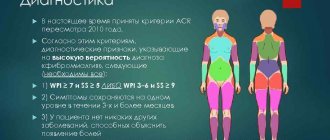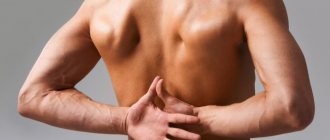WHAT IS A HEAL Spur
The disease begins with inflammation of the plantar fascia. This is a tendon that runs along the entire sole from the toes and attaches to the heel bone. The very place where the tendon is attached to the heel becomes inflamed. Here swelling occurs, blood supply deteriorates, and congestion occurs. Salts quickly accumulate around the affected area, forming an osteophyte - a small process or spine. The appendage itself, of course, does not hurt. But it injures the surrounding soft tissues, causing pain. A heel spur is clearly visible on an x-ray. From the outside, the heel looks reddened and puffy.
Comprehensive treatment of heel spurs (plantar fasciitis) at home
The most effective non-surgical method for treating plantar fasciitis today is stretching the heel fascia using special devices and exercises in combination with complete unloading of the foot. This integrated approach gives excellent results and helps eliminate pain and relieve inflammation of the heel tubercle.
When the plantar fascia is stretched, microtraumas heal and the functions of the foot ligaments are restored. Salt deposits no longer collect around the damaged fascia to form a heel spur. The growth stops growing and eventually disappears completely. Regular stretching of the fascia of the foot helps to completely get rid of the spur, eliminates pain, and improves the quality of life.
All products for effective stretching of fascia at home are combined into a unique set for heel spurs ORTGUT FASCIUM.
The kit includes:
- A night splint for heel spurs (orthosis) fixes the leg at an angle of 90 degrees with the fascia stretched to the maximum, eliminating morning “starting” pain.
- The plantar fascia stretching training band improves the flexibility and elasticity of the foot ligaments.
- Arch supports to support the arch of the foot when walking, effectively protecting the heel from stress and shock. Used during the day with shoes or barefoot.
- A massage ball for gymnastics for heel spurs strengthens the muscles of the foot, helps to relax after physical activity, and normalizes blood circulation.
The ORTGUT FASCIUM kit for plantar fasciitis helps eliminate pain, normalizes gait, and restores motor activity without surgery. Regular use of the products from the kit helps to completely get rid of plantar fasciitis and prevent relapse.
You can find out more about the kit and order it with delivery to any region of Russia by following the link.
HEALTH Spur: CAUSES OF APPEARANCE
Up to 2 million people around the world experience the symptoms of heel spurs every year! According to statistics, heel spurs develop more often in women over 40:
Causes contributing to the occurrence of the disease:
- physical inactivity, which negatively affects metabolism and the condition of the musculoskeletal system;
- excessive physical activity is equally harmful, as it destroys joints and ligaments;
- incorrect shoes: uncomfortable, with high heels, deforming the foot, pinching blood vessels;
- excess weight;
- pregnancy;
- injuries;
- Flat feet left unattended by a doctor cause a growth on the heel in 90% of cases!
Against the background of metabolic disorders, the risk of osteophyte in the heel increases many times.
Cause
A heel spur occurs when calcium deposits form on the bottom of the heel bone, a process that usually occurs over many months. Heel spurs are often caused by pulled muscles and ligaments, stretching of the plantar fascia, and repeated tears of the membrane that covers the heel bone. Heel spurs are especially common among athletes whose sports involve a lot of jumping and running.
Risk factors for developing heel spurs include:
- An abnormal gait that places excessive stress on the heel bone, ligaments, and nerves in the heel area.
- Running on hard surfaces
- Ill-fitting or worn-out shoes
- Overweight, obesity
In most cases, plantar fasciitis develops without a specific cause.
But there are certain risk factors that increase the chance of developing plantar fasciitis and include:
- Elderly age. Involutional changes in tissues lead to a decrease in the elasticity of the plantar fascia and a decrease in adipose tissue in the heel area
- Diabetes
- Activities that involve standing for long periods of time
- Episodes of vigorous physical activity
- Having flat feet or, conversely, a high arch.
- Tightening of the calf muscle and limited flexion of the foot.
The function of the plantar fascia is to absorb the stress that falls on the foot. But at a certain point, the fascia cannot withstand the load, and tears and inflammation of the fascia occur.
HEALING SPUR: SYMPTOMS AND TREATMENT
The disease develops rapidly: from 2 weeks to 2 months. At the initial stage, the osteophyte may not be felt at all. A slight pain that appears and disappears, bothers you after a few steps and disappears after rest. Then the pain becomes more intense and appears after exercise or long walking.
Unfortunately, patients are in no hurry to seek professional help. Many people rely on pharmacy or even folk remedies. This is self-deception and a waste of time, since heel spurs cannot be treated without the use of medical technologies.
While the patient endures, the thorn on the heel grows, causing more and more problems. Especially if it grows close to nerve endings. The patient instinctively seeks to unload the sore leg. The gait is disrupted, the posture is distorted, and the problem only gets worse.
In late advanced stages, surgery is often required.
IF SUCH SYMPTOMS OCCUR, IT IS IMPORTANT TO SEE A DOCTOR IMMEDIATELY!
How to cure heel spurs without surgery? The specialists of Doctor Ost MC know it very well! Here, heel spur treatment is quick and effective. Modern equipment for impact therapy for heel spurs allows you to get rid of the bone formation in the heel, which causes so much inconvenience, in just a few sessions. Today, when diagnosed with a heel spur, shock wave therapy is perhaps the most effective solution. It breaks the osteophyte into tiny particles, which the body removes independently through the circulatory system. Shock wave therapy for heel spurs does not require any incisions or anesthesia!
How to remove heel spurs at home without surgery?
Heel spores can be cured without surgery using conservative methods only when a certain condition is created for the heel fascia. The correct condition means the position of the heel in which it is minimally exposed to microtraumas leading to the formation of a heel spur.
In the daytime, taping has this effect; at night, using a Strasbourg sock. Let's look at these tools in more detail.
Taping.
Taping is a method of wrapping the foot to maintain the longitudinal arch. To tape a foot with a heel spur, use a wide adhesive plaster or sports tape. Some pharmacies sell ready-made tapes.
There are several taping techniques, the simplest consists of the following steps:
- Wrap the tape around the foot at its widest point and fix it.
- The next strip is placed on top of the first strip with an overhang of 2 cm. Thus, the metatarsus is fixed.
- Turn the tape around the base of the foot. To do this, secure the tape near the big toe with a bandage and wrap the tape around the heel.
- The tape is passed so as to cross the foot diagonally to the big toe from below. As a result, the tape should end close to where it begins.
- Wrap the tape from the foot to the base of the little toe, fixing the patch. Next, the tape is wrapped around the heel and stretched diagonally back to the little toe.
- The revolutions under points 4...5 are repeated.
A corset is made around the transverse arch: from the base of the toes, the tape is applied around the foot, leaving it open. The ends of the tape are secured with adhesive tape.
Strasbourg sock.
The Strasbourg sock is a special device for fixing the feet in an extended position during sleep. Using the Strasbourg sock is very simple: just put it on and fasten it according to the instructions.
Regular use of the sock while sleeping at night helps relieve pain, prevent the development of spurs and reduce existing growths.
In addition to these orthopedic aids, it is necessary to take care of unloading the heel when walking. Impact load and body weight pressure during movement have a negative impact on the heel spur.
To prevent harmful effects, it is necessary to wear special shoes for heel spurs and orthopedic insoles. The use of a Strutz arch support to support the arch also gives good results.
All these devices are required for the treatment of spurs on the heels; remember that even the most expensive medications and effective folk methods will be powerless if your heels are subject to shock loads during the treatment period.
HOW TO GET RID OF A HEAL Spur FOREVER?
It should be understood that surgical removal of a heel spur requires lengthy postoperative rehabilitation and often does not produce results. The painful illness may return, and the complex procedure will have to be repeated
To prevent the disease from returning again, it is always important to fight not the consequences of the disease, but the causes of its occurrence. This principle is adhered to by the specialists of the Doctor Ost MC. Here, joint treatment is approached systematically, involving a whole team of specialists in joint work. Our own, unparalleled treatment regimen gives excellent results.
Medical bile: ways to treat heel spurs at home
Natural medical bile is a light brown substance obtained from cows. Bile is used for a variety of medicinal purposes, including heel spurs. The substance has an analgesic effect and also promotes the resorption of bone-saline buildup.
Before removing a heel spur at home using natural bile, the heel must be steamed in a bath with salt or iodine. After this, a gauze swab is applied, generously soaked in bile.
The tampon is left overnight, and the foot is washed in the morning. For best results, it is recommended to wear a sheepskin sock on top or use microwave heated slippers.
Recipes for treating spurs with bile are varied, the most effective among them are:
Bile + red or black pepper + camphor alcohol.
Bile and alcohol are taken in a ratio of 1:2 and infused for a day. Camphor alcohol enhances the effect of medicinal bile. Apply as a compress.
Medical bile + iodine solution + ammonia + honey + glycerin.
All substances are taken in equal proportions. The resulting solution is infused for 2-3 days and applied as a compress. Before use, the mixture must be heated in a water bath.
Bile 200 ml + 50 ml shampoo + 50 ml vodka.
Mix thoroughly and use immediately as a compress.
What to do after charging?
After gymnastics, it is recommended to take a foot bath and have a relaxing massage. Folk remedies for heel spurs advise taking baths with sea salt, iodine, honey, and also based on medicinal herbs.
After the bath, you need to apply Pyatkashpor cream containing medical bile to your feet. Creams from the Pyatkashpor line soften the skin of the heels and help the bone spine to dissolve.
You can do a relaxing foot massage for heel spurs yourself. Massage movements consist of stroking, light tapping and pinching. The main goal of the procedure is to relax the nerve endings of the fascia and normalize blood circulation in the feet.
To fix the heel fascia in the correct position during the day, you can use kinesio tape for heel spurs, and at night - a Strasbourg sock.
How does gymnastics help with heel spurs?
Physical therapy for heel spurs is based on training the heel fascia. With constant exercise, it becomes elastic and strong, minimally susceptible to micro-tears when exposed to salt deposits.
Gymnastics also helps to stretch the muscles of the feet and legs, due to which the longitudinal dimensions of the fascia increase.
The main advantage of gymnastics is the absence of side effects and a minimum of contraindications.
To enhance the positive result, it is necessary to unload the heel by wearing orthopedic insoles with spurs, protecting the fascia from impact load.
If you do gymnastics regularly, then exercises for heel spurs give the following results:
- strengthens connective tissues and tendons, preventing their damage;
- accelerates the regeneration of injured heel tissue;
- prevents salt deposition and build-up;
- improves blood supply to the feet;
- makes the heel fascia firm and elastic.
When assessing the effectiveness of exercise therapy, it is necessary to answer the question: is it possible to walk a lot with a heel spur? In this case, physical therapy replaces walking, running and exercises that load the legs, which are contraindicated for spurs. Contraindications to physical exercise are open wounds of the feet and some forms of varicose veins.
Symptoms
The main symptom of a heel spur is severe pain that reduces a person's quality of life. Moreover, it is not necessary that at the same time as the pain, a person will observe swelling or redness on the heel (although they may be present). If there is redness, then with your hands you can feel that this area of the skin is warmer than the rest, which is associated with the development of inflammation.
Most often, the pain experienced by patients can be compared to the sensation of a nail in the heel. It is felt most strongly when a person steps on his foot for the first few times after a long rest or sleep. Then the leg gets used to it a little, the pain becomes a little less, and in the evening, due to the tortured state, it starts to hurt more strongly again.
Symptoms of heel spurs develop in different ways. For some people they appear unexpectedly - just one morning a person gets out of bed and experiences terrible pain. In other patients the situation is different: manifestations occur periodically, there may be periods of calm. In this case, the signs of a heel spur indicate that the process has become chronic.
As a rule, trying to avoid pain and discomfort, a person begins to take care of his heel and not step on it again. Because of this, the gait changes greatly, walking becomes uncomfortable. Typically, a heel spur appears on one leg, but in rare cases it can develop on both legs at the same time.
Traditional methods of treatment.
Sand, salt, lavender oil, anti-inflammatory foods, baking soda
The sand is heated in the oven and the foot is immersed in it until the sand cools down.
You can use half a pack of salt instead of sand. It is better to do these warm-ups before bed. Apply lavender essential oil.
According to a 2015 study, lavender essential oil has anti-inflammatory properties. Try dissolving one or two drops in olive or coconut oil and massage your feet with it. You can also try adding a few drops to a warm foot bath.
Compresses are also made with salt (ten milliliters of iodine tincture and a tablespoon of honey are added to a tablespoon of salt), which are applied at night a couple of times a week (in the morning it is advisable to walk around with the compress for about 15 minutes). Foot baths are also good at soothing pain: boil a salt solution (a kilogram of salt per five liters of water) and, after cooling it down so that the foot can tolerate it, keep it in this solution until it cools down. The procedure is repeated daily for 10 days.
Eat anti-inflammatory foods. The following foods: turmeric, ginger, cayenne pepper and cumin seeds are known for their strong anti-inflammatory properties. These products contain natural antioxidants and polyphenol. And they act as protective compounds and help reduce inflammation. You can prepare a decoction of 1 teaspoon of ginger, turmeric or pepper powder and warm water. Drink this whenever pain occurs. With cumin seeds, you can boil them in water, strain and drink them to relieve pain.
Baking soda. You'll be surprised at the many things this humble kitchen ingredient can be used for. Baking soda has many benefits, from beautiful skin to teeth whitening. It acts directly on the calcium crystals deposited in the heel. Make a paste by mixing half a teaspoon of baking soda with water and apply it to your heel. Baking soda also helps balance pH levels.
Cabbage, vinegar, aloe vera
Cabbage leaf compress. It's no joke - some people recommend using cabbage to relieve heel pain. Soften some cabbage leaves. Secure the leaves with gauze or a bandage and leave overnight. Some people recommend pouring honey over the cabbage leaves before setting them. Cabbage contains a pigment called anthocyanin, which relieves replenishment.
Apple cider vinegar is a common home remedy for a wide variety of ailments. Mix one cup of apple cider vinegar and 6 cups of warm water in a bathtub or container. Soak your sore feet in water for 30 minutes. Apple cider vinegar is rich in nutrients and minerals, including magnesium, which can be absorbed through the skin.
Aloe vera seems to be growing in popularity as a panacea and superfood (or in some cases, superdrink). This plant is rich in antioxidants and antibacterial properties and is also very beneficial for the skin. Aloe vera can be rubbed into the skin topically. Aloe vera contains mucopolysaccharides, which have anti-inflammatory properties.
Massotherapy
Ball massage . This massage is useful for relieving pain. To relieve the pain associated with a heel bone spur, it is necessary to massage the calf muscles. This stimulates blood circulation, which leads to relaxation of the calf muscles, reducing stress on the foot.
For a massage you can do yourself, use a small ball and roll it along the bottom of your foot. You can also use a simple massage roller. This can be done while you are sitting at your desk or on the couch in front of the TV. Many people follow this method to bring immediate and long-lasting relief.
Bottle massage. Sit on a chair with both feet on the floor. Raise one leg and place a water bottle under the middle of your foot. Slowly roll the water bottle from the ball of your foot to your heel, leaning forward to apply more pressure as you massage. Continue rolling the water bottle back and forth from your heel to the ball of your foot about 10 times and repeat with the other leg.
Iodine
You need to crush an analgin tablet, add a little iodine to the powder and mix, apply the resulting mixture to the heel. You can make baths: add a tablespoon of soda and 15 drops of iodine to three liters of water.
Magnesium
Magnesium is an essential mineral for bone formation and calcium utilization. More than half of the magnesium in the human body is stored in the bones, and the body requires it for protein synthesis.
One way to treat heel spur symptoms is to take a warm bath with Epsom salts. Epsom salt is magnesium sulfate. Which has many beneficial properties when it comes to relieving pain and inflammation. Add a cup of Epsom salts and gently massage your heels to relieve pressure.
There are also many great magnesium-rich foods that supply you with magnesium. For example, avocados contain high amounts of magnesium. Pay attention to spinach and bananas, they are also excellent sources of magnesium. Finally, pumpkin seeds, lentils, white beans, brown rice, millet and dried figs also contain magnesium.
Compress made of honey and dough, curd dressings
Heel spurs are treated with folk remedies by smearing the heel with honey, putting some dough on it, putting on a plastic bag and a warm sock.
Three tablespoons of fresh cottage cheese are placed on a bandage folded in several layers and tied to the heel. The procedure is carried out three nights in a row.
Plantar massage while sitting
Sitting on a chair, place the shin of the leg you are working on on your other knee.
Using the same hand, extend your fingers towards your shin until you feel a stretch in the sole. With your other hand, massage the bottom of your foot, moving from your heel to your toes. Duration: 3-5 minutes. After all the stretching exercises are done, move on to strengthening the muscles.
